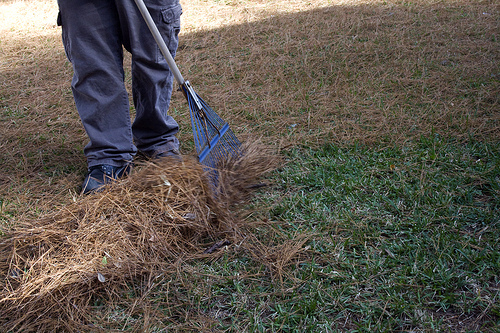50% Off First Application¹
Call 1-855-940-1479
and connect with a TruGreen consultant
Why Turf Maintenance Is So Important To Your Lawn’s Overall Health
If you’re trying to have a lawn that stays healthy and green all year long there are some important steps that you must take. Turf maintenance is one of the most essential factors in reaching the goals that you have for your lawn. Without this maintenance lawn problems will escalate quickly, since issues like dry soil make your lawn more susceptible to common invaders including weeds and insects. Read on to learn about some of the best turf maintenance practices for your yard.
Proper mowing is key
A well thought out mowing schedule is a vital part of keeping your lawn healthy. You may be tempted to mow your lawn once every week or two, but the proper amount of time between mowing actually depends on new growth, not time passed. You want to remove no more than ⅓ of the total grass length when mowing, this way you can keep your grass at the ideal height and avoid damage to your turf. The chart below shows the ideal height for some of the most common types of grass in the United States:
| Type of grass | Ideal height in inches |
| Bahiagrass | 2 – 4 |
| Bentgrass | ¼ – ¾ |
| Bermudagrass | ½ – 2 |
| Bluegrass | 1 ½ – 2 ½ |
| Buffalograss | 2 – 3 |
| Centipedegrass | 1 ½ – 2 ½ |
| Fescue | 2 ½ – 3 |
| Kentucky Bluegrass | 1 ½ – 2 ½ |
| Perennial Ryegrass | 1 ½ – 2 ½ |
| St Augustine | 2 – 4 |
| Zoysiagrass | ¾ – 2 |
If you don’t see the type of grass that was planted in your lawn on this chart, consult with an expert at the store where the grass seeds were purchased.
Fight thatching with your rake

In many homes rakes stay out of sight and mind until fall when leaves begin to drop. This is a common mistake, you should actually be raking your lawn during all seasons other than winter. During winter months soil dries up, and using your rake could cause damage. Giving your lawn a gentle raking during spring, summer and fall greatly reduces the chance of thatching.
Leaves, roots, dead grass and other debris in your lawn lead to thatching by blocking sunlight and water from reaching your lawn’s soil. When you rake your lawn it removes this debris, therefore preventing it from causing an issue for your turf. Maintence like this takes only a few minutes out of your day, but it can save you a lot of hassle by preventing other potential problems.
Dry soil can be prevented
Dry soil is one of the leading cause of lawn problems for homeowners in the United States. If your soil dries out you’ll start to notice weeds, unwanted insects and brown patches throughout your lawn. Regular irrigation prevents dry soil, but if you’re still having problems despite this your problem is probably a water absorption issue. Aeration is the best way to prevent this type of problem.
Aeration is the process of removing plugs of soil from your lawn, allowing both water and air to penetrate your turf’s rootzone. There are many tools available for aeration, they vary greatly in features and price. Aeration paired with routine irrigation is the key to soil that won’t dry out, allowing for a successful and healthy lawn.
If you’ve seen to all of the above steps and are still experiencing problems with your lawn, it may be time to reach out to a lawn care professional. Lawn care companies have the resources and experience required to keep grass healthy in any yard. Seeking the help of one of these companies is not a sign of failure, it indicates commitment to a healthy lawn.

TruGreen will gladly visit your property as often as needed between scheduled visits to make any necessary adjustments and to ensure your satisfaction.
Getting Started with TruGreen
- Call or fill out the form above to reach a lawn care specialist.
- Know the square footage of your yard, as well as any specific areas of concern.
- With the help of your specialist, create a customized lawn care plan that meets your lawn’s needs.
- Schedule your Healthy Lawn Analysis2 to start your service.
